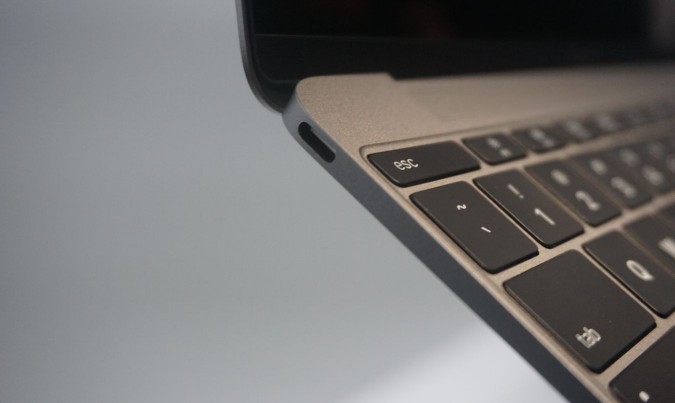New MacBook Is Too Ahead of Its Time
There are a lot of shocking things about the new 12-inch MacBook. One is how light it is. Two pounds! Another is that the Force Touch trackpad provides a clicking sensation without moving at all. Taptic magic! But the most shocking thing is what's missing.
You won't find an SD Card slot, multiple USB ports, or a dedicated DisplayPort or HDMI port on this $1,299 slice of the future. There's only a single USB Type-C port. That's it?! Yes. Apple says that this port puts "just about everything you need in one place." This new standard can deliver power to the laptop, charge gadgets, handle data transfer and feed video to external displays.
The problem is that the MacBook's port can't do more than one of the above tasks at once without help. Here's what I mean.
Scenario 1: Charging your iPhone or connecting your camera
Say you want to charge your iPhone with the 12-inch MacBook while you're out and about. You can, but only if you buy the USB-C to USB adapter ($19), which plugs into the USB-C port. It's yet another thing you'll need to carry. Dongles for everyone! Keep in mind, too, that this accessory won't let you charge your MacBook and iPhone at once, just the latter. (There’s another add-on for juicing both at the same timeSee below.)
Want to transfer pics from your camera to the MacBook and enjoy them on the lush 2,304 x 1,440-pixel Retina display? You'll need to pack both the USB cable for your camera and a USB-C adapter. In general, I much prefer using an SD Card slot. No cables required.
It's clear that members of the target audience for the new MacBook will be using their iPhones to take most of their pics, which will get uploaded to iCloud, or will use a digital camera with Wi-Fi built in.
MORE: New 12-inch Retina MacBook Hands-on: Pros and Cons
Sign up to receive The Snapshot, a free special dispatch from Laptop Mag, in your inbox.
Scenario 2: Using an external monitor
Although the 1.1-GHz Core M processor inside the new MacBook isn't as fast as a Core i5 CPU, it should still be capable enough to handle most computing chores. But no one wants to use just a 12-inch display at his or her desk. To connect to a larger monitor, you'll need to spring for a different accessory.
The $79 USB-C Digital AV Multiport Adapter includes three ports: HDMI for displays, USB-C for charging and a regular USB port for charging. If you're old school and need to connect to a VGA projector or monitor, there's a separate $79 USB-C VGA Multiport Adapter.
Scenario 3: Connecting to wired networks
When I'm back at my desk, I use my MacBook Pro to connect to the office network. It's just more reliable than Wi-Fi. But to do that I need to plug in Apple's Thunderbolt to Gigabit Ethernet Adapter ($29). The MacBook doesn't have a Thunderbolt port, though. That means that if you prefer a fast, wired connection, you'll have to get a third-party USB 3 to Ethernet adapter ($19) and plug that into Apple's $79 Multiport Adapter.
To be fair, the new MacBook is designed to be wireless, and it supports the fastest 802.11ac standard. But you will have to find workarounds if you want to go the wired route. Your IT guy will not like this notebook.
MORE: USB Type-C FAQ: Everything You Need to Know
Way Ahead of the Curve
Who is the new MacBook for? That's the $1,299 question. I don't believe it's for folks who just want to surf the Web on the sofa or get work done at the coffee shop. There are much less expensive Ultrabooks, Chromebooks and (yes) MacBook Airs for that.
The 12-inch MacBook also isn't ideal for road warriors like me who tend to carry multiple gadgets that need to be juiced. (I could maybe live without an SD Card slot, but the MacBook could really use an extra USB 3 port.) This machine is really for those who want to make a statement and cut ties to the computing past while still getting close to a full PC experience. Think people who have been trying to use an iPad on the road with a keyboard — and hating it. I'm just not in this crowd, at least not yet.
Keep in mind that I also didn't love the first MacBook Air in 2008, which was radical for its time because it lacked Ethernet and an optical drive. It had a single USB port and no memory card slot, and the battery life was too short. But the line got better over time, becoming one of the top sellers because Apple improved upon its bold bet and listened to user feedback, adding additional ports and vastly improving endurance. I expect history to repeat itself.



